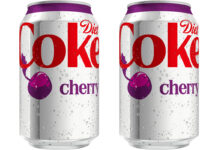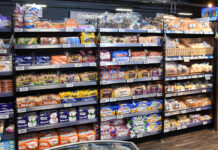Britain’s sales and marketing professionals explain how they see the convenience scene

This issue: Nick Beresford, sales director, convenience with P&G
P&G owns brands in several categories. Are they all relevant to convenience outlets or do you concentrate on some in particular?
The main categories in which we aim to assist our convenience retail customers are baby care, homecare, laundry, health and beauty and batteries. Convenience retailers are the lifeblood of any community and preserving their position is crucial to the people in their local area and to manufacturers such as P&G. They are vital in linking big brands such as ours with the end consumer, and we are committed to helping them thrive.
Do you think convenience retailers understand your categories, or is there still a lot that could be done?
Although we already offer a wealth of advice and expertise to our retail customers, there is always room for improvement across all of the categories in which we operate. Above all, it is about giving retailers the tools to engage more closely with their customer base.
One very concrete tool that we have to assist independent retailers is our category management programme ShelfHelp, which we use to offer hints and advice to help maximise the potential across categories.
A collaborative approach is absolutely the best way to support our independent retail customers. We want to champion our brands and our categories, and they want to grow sales in those areas. P&G is committed to offering the right pack sizes at the right price point, backed by relevant promotional plans that will help drive sales for independent retailers.
Have you seen especially positive growth in convenience in any particular category or with any particular brands?
Aside from our own knowledge through interacting with the sector every day, the latest data from IGD shows convenience stores are growing faster than overall grocery, at 4.6%, and they’re significantly expanding their range of services and offering added benefits such as home delivery and cash machines to their shoppers. As a key supplier to this channel, it is crucial that we also review our ranges and services and ensure that we are serving convenience retailers to the best of our ability, across all of our categories.
How does convenience compare to the multiples in the categories where you have brands? Are there markedly different styles of merchandising that you recommend or is it more a case of making tweaks to systems that are in place in larger stores?
At P&G we’re always mindful that convenience is a separate channel with very distinct needs.
This is reflected in the advice that we offer convenience retailers across all our categories, including core range, pack sizes and POS materials.
We are also well aware of the right pack size in the right channel and work closely with customers to make sure our range best suits the needs of their shoppers.
In the time that ShelfHelp has been available many things have changed. In particular in categories like laundry there have been technical developments, brand extensions and new formats. How does ShelfHelp keep up?
We are seeing convenience retailers increasingly looking to category management tools such as ShelfHelp to increase their sales and engage more closely with their customer base.
As ShelfHelp is data-based, our category management approach is constantly evolving and in 2013 there are going to be further improvements to the accessibility of ShelfHelp for our customers. Watch this space for more details!
What do see as the most important current trends and the most likely key trends in the near future in your categories in c-stores?
2013 is certainly proving to be a tricky year, but we are there every step of the way with our retail customers to ensure that they are making the most of the available opportunities for growth.
This year a number of new product launches and marketing initiatives will be unveiled that should help secure the place P&G has won in the hearts and minds of consumers.
Nick Beresford studied engineering at Durham University but decided that he “wanted to work on the business-building front end rather than the cost-cutting back end”. He’s had a number of commercial and marketing roles in P&G in the UK and Canada.
In his current role he likes: “to spend time in store and visiting customers,” he said.
“And I also spend a good portion of my time working with our brand teams to develop the propositions and plans that we need to win in our channel.”


















